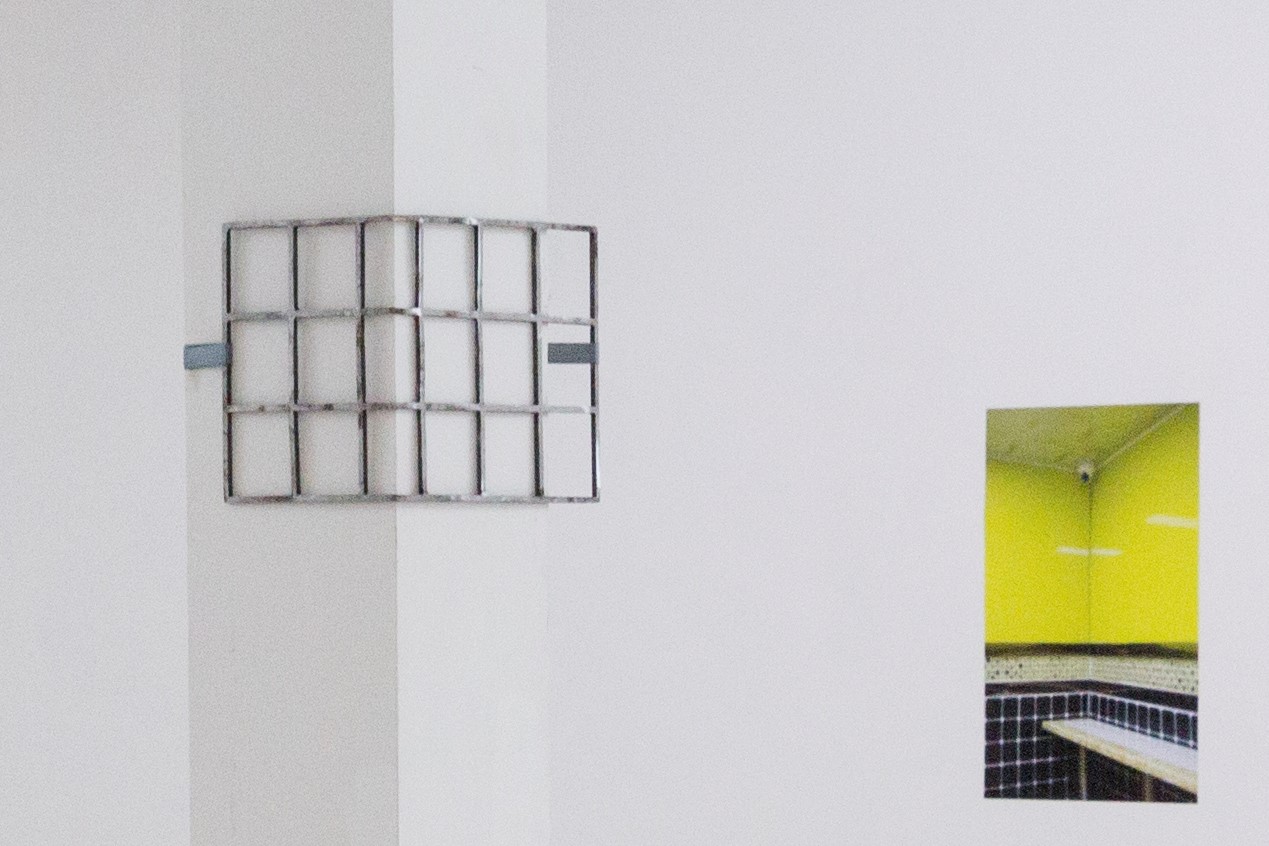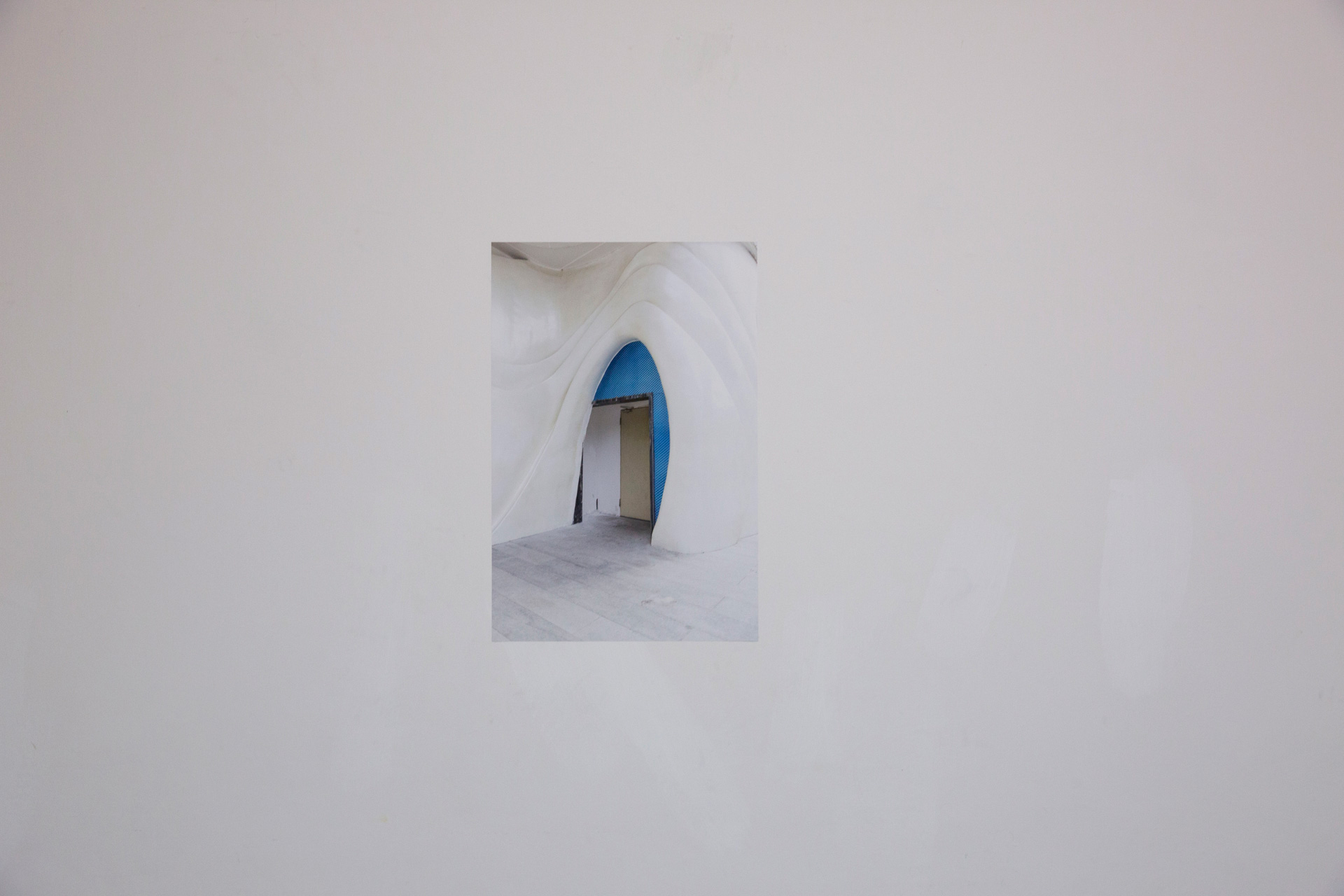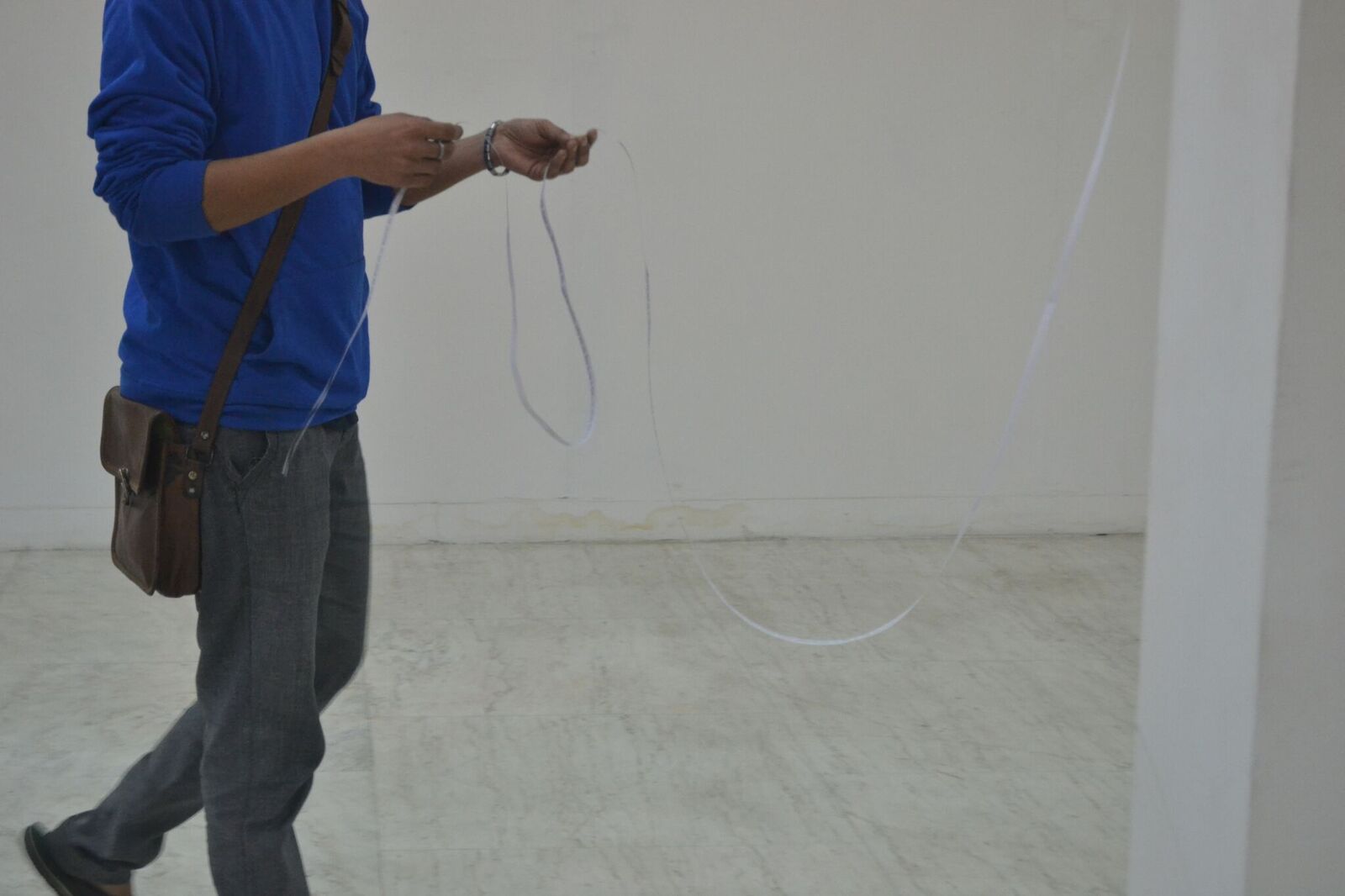‘First Draft’: a two day Pop-Up Show | New Delhi, India
During the Building Bridges exhibition in New Delhi, last February, Sonam Chaturvedi and Tatjana Henderieckx joined with three other artists, Charlot Van Geert from Belgium and Priyank and Priyesh Gothwal from India, to put up a new, experimental exhibition, sharing ideas, drafts, projects, and showing them to the public.
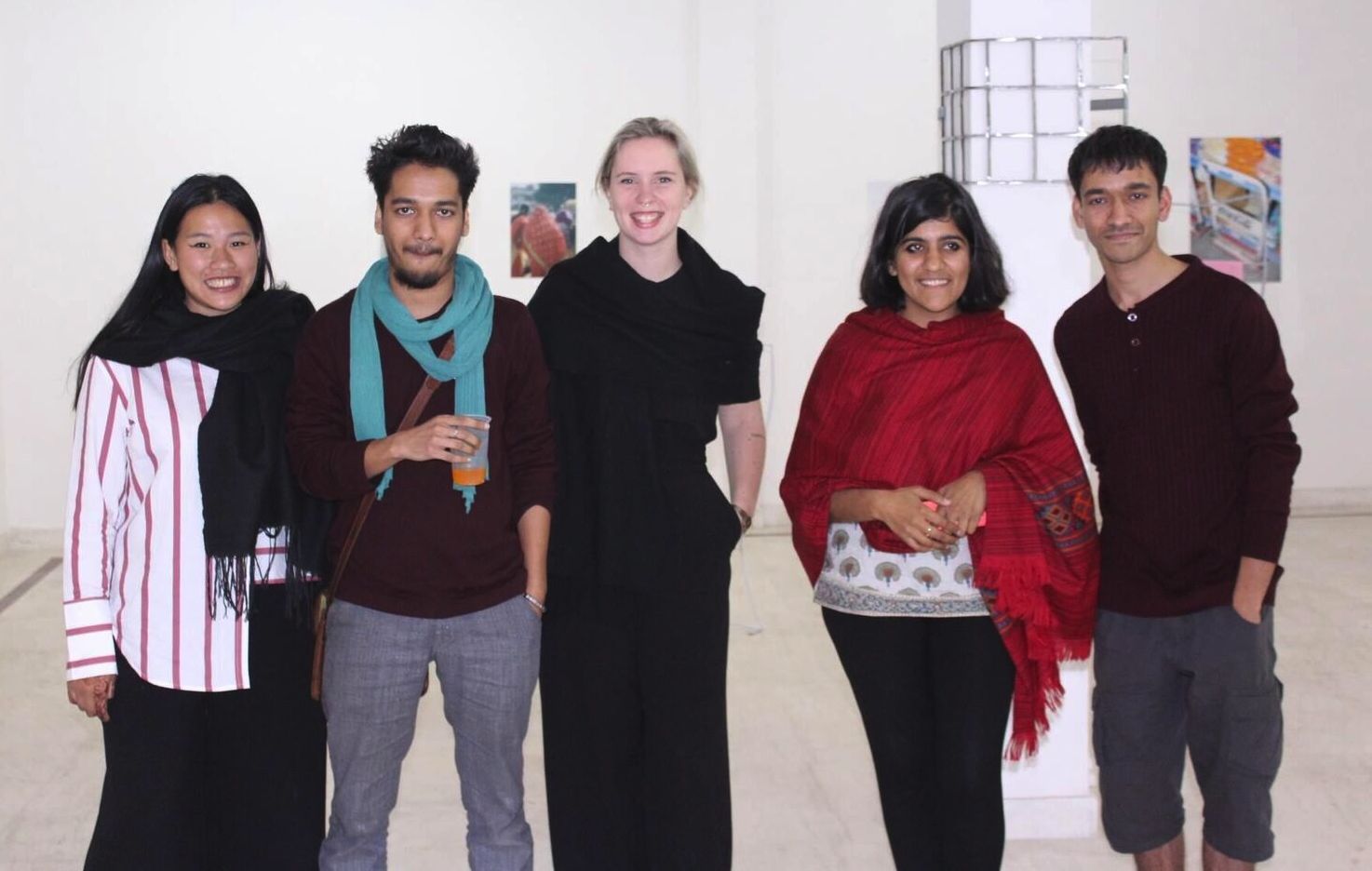
Happenings are of the everyday, performances of the here and now; an unceasing cycle of continuities and discontinuities is a moment, an event, a happening. Like the layering of text to reinforce drafts to finalize a piece of writing, or like the dressing of an armature, the First Draft, an exhibition of works in progress, decided to expose its unfinished contradictions, abandoned ideas, past experiments, unscripted compositions, and shifting thoughts, overshadowed by the speculations and improbabilities of the maker. Like the temporal disposition of all occurrences, this happening popped up one evening and withdrew the next, appearing only to those who risked to negotiate through the busy IGNOU road to view it.
While Ushmita Sahu was curating Building Bridges -an international digital alliance between thirteen young emerging artists from across boundaries, with the generous support of Emergent Art Space, the show reflected on the consequences of a globalizing world.  Two artists already participating within this project along with three others, began to ideate in a parallel capacity and spontaneously decided to put up a show, curating the space as a collaborative response to each other’s thought processes. The site-specificity of some of the works, foregrounded the binaries of space and installation participating within one another to impart a spatio-temporal experience. As a humble guide to the spectator, titles, tags, labels and details were retained within copies of hand-drawn maps of the floor-plan with approximated locations of the displays on site, yet prevented her/him from limiting her/his imaginings to accompanying instructions. The injected sense of incompletion to the display provided room for multiple approaches to observation, interpretation and imagination. The instantaneous dismantling of the show regards the temporality of a work in progress, the immediacy of gestures and the materialization and dissipation of ideas.
Two artists already participating within this project along with three others, began to ideate in a parallel capacity and spontaneously decided to put up a show, curating the space as a collaborative response to each other’s thought processes. The site-specificity of some of the works, foregrounded the binaries of space and installation participating within one another to impart a spatio-temporal experience. As a humble guide to the spectator, titles, tags, labels and details were retained within copies of hand-drawn maps of the floor-plan with approximated locations of the displays on site, yet prevented her/him from limiting her/his imaginings to accompanying instructions. The injected sense of incompletion to the display provided room for multiple approaches to observation, interpretation and imagination. The instantaneous dismantling of the show regards the temporality of a work in progress, the immediacy of gestures and the materialization and dissipation of ideas.
 The space is primarily consumed by two-dimensional planes, of photographs and screens, but for Charlot’s sculptural objects. These installations defined through outlines and flat planes with the use of wood and metal, convey a sense of reflected summaries and semblances of the photographs displayed across them. The unmouldable materials of metal and wood, susceptible to damages, retain marks and scratches in their physical fabrics as irreversible wounds. For Charlot, these very marks is what gives the object its former character, a new identity, and embracing these mistakes is her contribution to a happening and a constant becoming.
The space is primarily consumed by two-dimensional planes, of photographs and screens, but for Charlot’s sculptural objects. These installations defined through outlines and flat planes with the use of wood and metal, convey a sense of reflected summaries and semblances of the photographs displayed across them. The unmouldable materials of metal and wood, susceptible to damages, retain marks and scratches in their physical fabrics as irreversible wounds. For Charlot, these very marks is what gives the object its former character, a new identity, and embracing these mistakes is her contribution to a happening and a constant becoming.
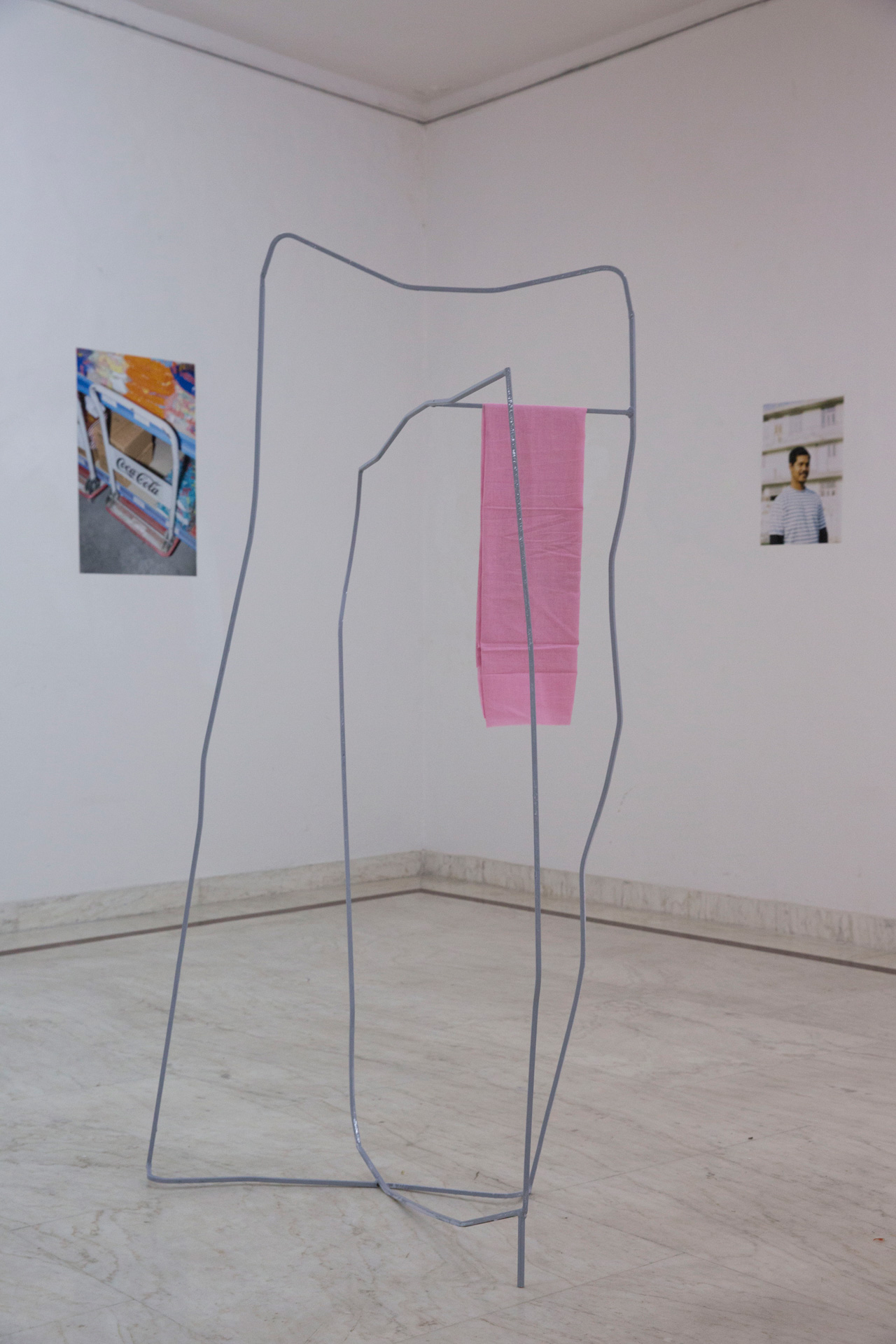 Tatjana has a story to tell with every still she captures, where she configures the everyday mundane, repetitive contours with suggestive impressions. Capturing the animate and the inanimate in an interworking space of communication, Tatjana and Charlot persistently respond to each other’s works by collaborating to find meaning through the existence of the other. Could Charlot’s be a reference to the materiality of a past as a vague remembrance that is all that remains in space and time, as an intangible fading thought, or the recovery of a blind memory, with reference to Tatjana’s photographic compositions as fields of instant visual awareness and impression?
Tatjana has a story to tell with every still she captures, where she configures the everyday mundane, repetitive contours with suggestive impressions. Capturing the animate and the inanimate in an interworking space of communication, Tatjana and Charlot persistently respond to each other’s works by collaborating to find meaning through the existence of the other. Could Charlot’s be a reference to the materiality of a past as a vague remembrance that is all that remains in space and time, as an intangible fading thought, or the recovery of a blind memory, with reference to Tatjana’s photographic compositions as fields of instant visual awareness and impression?
Sonam approaches the concept of time and memory with a number of experimental digital aids and poetry as a result of a sporadic stream of thoughts and a lingering fatigue in the present. A house across the street was suddenly demolished one morning, the abrupt nature of this operation which vexed the memory of a house that seemed unscathed only yesterday, but ceasing to be today; once there, now gone, to remain in reminiscences. 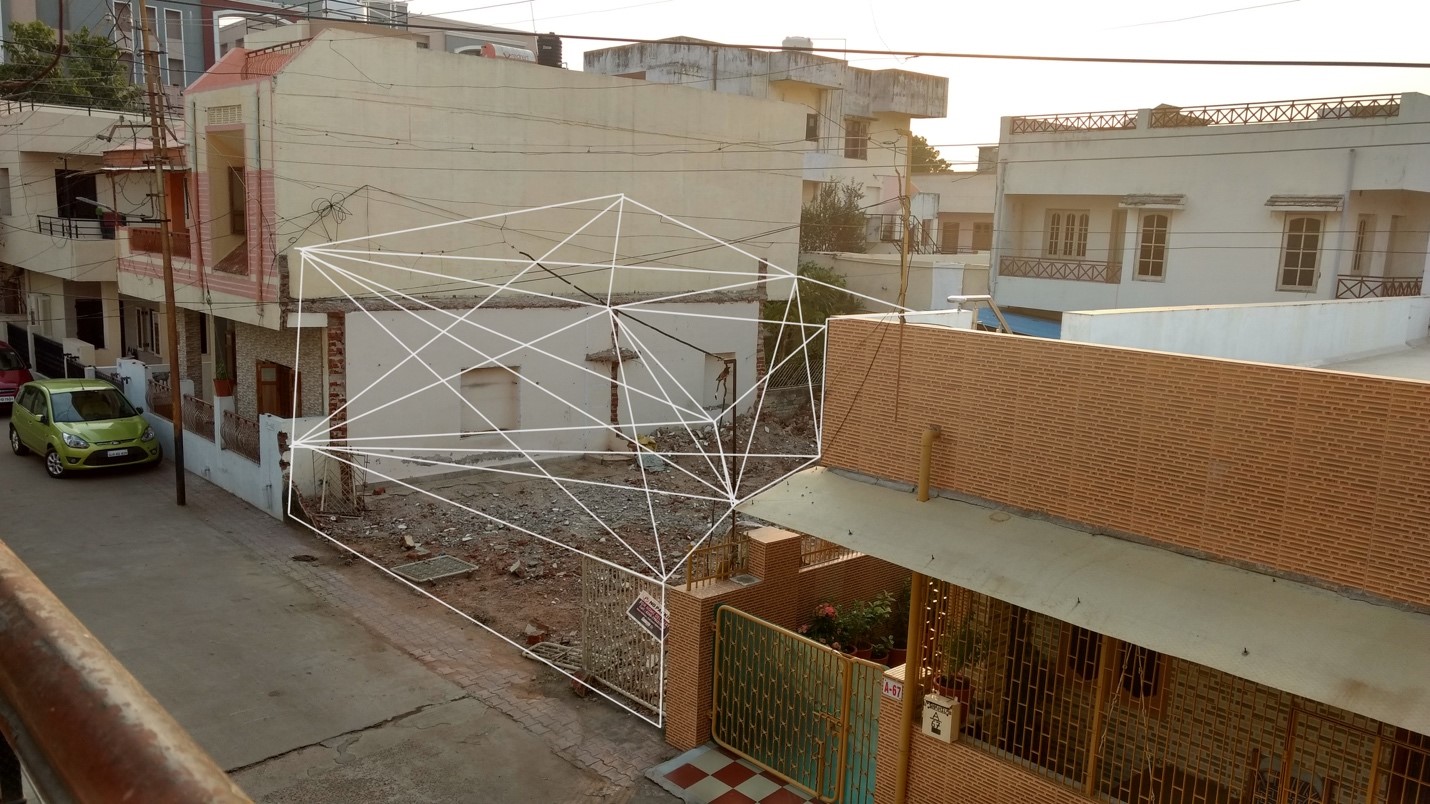 To cope with the absence, she tries to recuperate the house through virtually imagined reconstructions, choosing simple aids in Photoshop to generate more dimensions to the memory of the house -to erase the past and make her own web of angles, to erase again and try anew- in the process necessitating the spectator to assume and anticipate the movement of the lines in the video of a work-in-progress screen-recording propped up on the wall. The gradual entropy of her surroundings steers her designs to develop into webbed networks to possess walls and spaces between wires, to hold onto –only more fraily- continuities and discontinuities, like the failing memory. The sheer webs only come into view as one looks closer at her archival prints, suggestive of the invisible inbetweens of inhabited three dimensional spaces not visible to the naked eye unless closely interacted with. It is, she states, a “bridging of the gap between coherence and incoherence.”
To cope with the absence, she tries to recuperate the house through virtually imagined reconstructions, choosing simple aids in Photoshop to generate more dimensions to the memory of the house -to erase the past and make her own web of angles, to erase again and try anew- in the process necessitating the spectator to assume and anticipate the movement of the lines in the video of a work-in-progress screen-recording propped up on the wall. The gradual entropy of her surroundings steers her designs to develop into webbed networks to possess walls and spaces between wires, to hold onto –only more fraily- continuities and discontinuities, like the failing memory. The sheer webs only come into view as one looks closer at her archival prints, suggestive of the invisible inbetweens of inhabited three dimensional spaces not visible to the naked eye unless closely interacted with. It is, she states, a “bridging of the gap between coherence and incoherence.”
 In an oneiric state of occurrences, her flickering, intermittent thoughts within busy traffic-infested neighborhoods, are translated into poetry. Physically undeterred but mentally strained, a long string of unmatched text is wrapped around a pillar with one end hanging loose on the floor. The viewer is necessitated to pick up the loose thoughts, stretch them as she/he pulls away from the pillar to a corner of the room, to read and relate to them. The resounding of the cacophonous outside within the calm interiors while clutching onto a string of evidential text in hand, stagnates the performance of the reminiscing spectator.
In an oneiric state of occurrences, her flickering, intermittent thoughts within busy traffic-infested neighborhoods, are translated into poetry. Physically undeterred but mentally strained, a long string of unmatched text is wrapped around a pillar with one end hanging loose on the floor. The viewer is necessitated to pick up the loose thoughts, stretch them as she/he pulls away from the pillar to a corner of the room, to read and relate to them. The resounding of the cacophonous outside within the calm interiors while clutching onto a string of evidential text in hand, stagnates the performance of the reminiscing spectator.
Priyesh and Priyank in a collaborative effort bring to knee-level display, strips of photographic visual narratives incorporated with text as fictitious subtitles. Individual stills of landscapes as images in themselves are stitched together or superimposed to generate broken, yet linear panoramas as if captured from multiple points of view from a speeding means of transport. With the camera sometimes subjected to unsteady perception, the resulting fragmented parts deceive the idea of a single linear landscapic narrative, but is held together with the fictitious subtitles to create a whole.
 The display of these horizontal formats at a lower chapter of the wall induces discomfort in the spectator as he sweeps across the length trying to view the exhibits. The artists see this as a process into performance initiated by the position of the work and executed further by the spectator himself.
The display of these horizontal formats at a lower chapter of the wall induces discomfort in the spectator as he sweeps across the length trying to view the exhibits. The artists see this as a process into performance initiated by the position of the work and executed further by the spectator himself.
To experiment with works in progress was to further the idea of constant configurations and disfigurements to a work of art, to be able to expose a process in order to gather viewer-responses and assessments, as references before the making of a final work of art - which it cannot really become if it is involved in a cycle of a constant becoming. 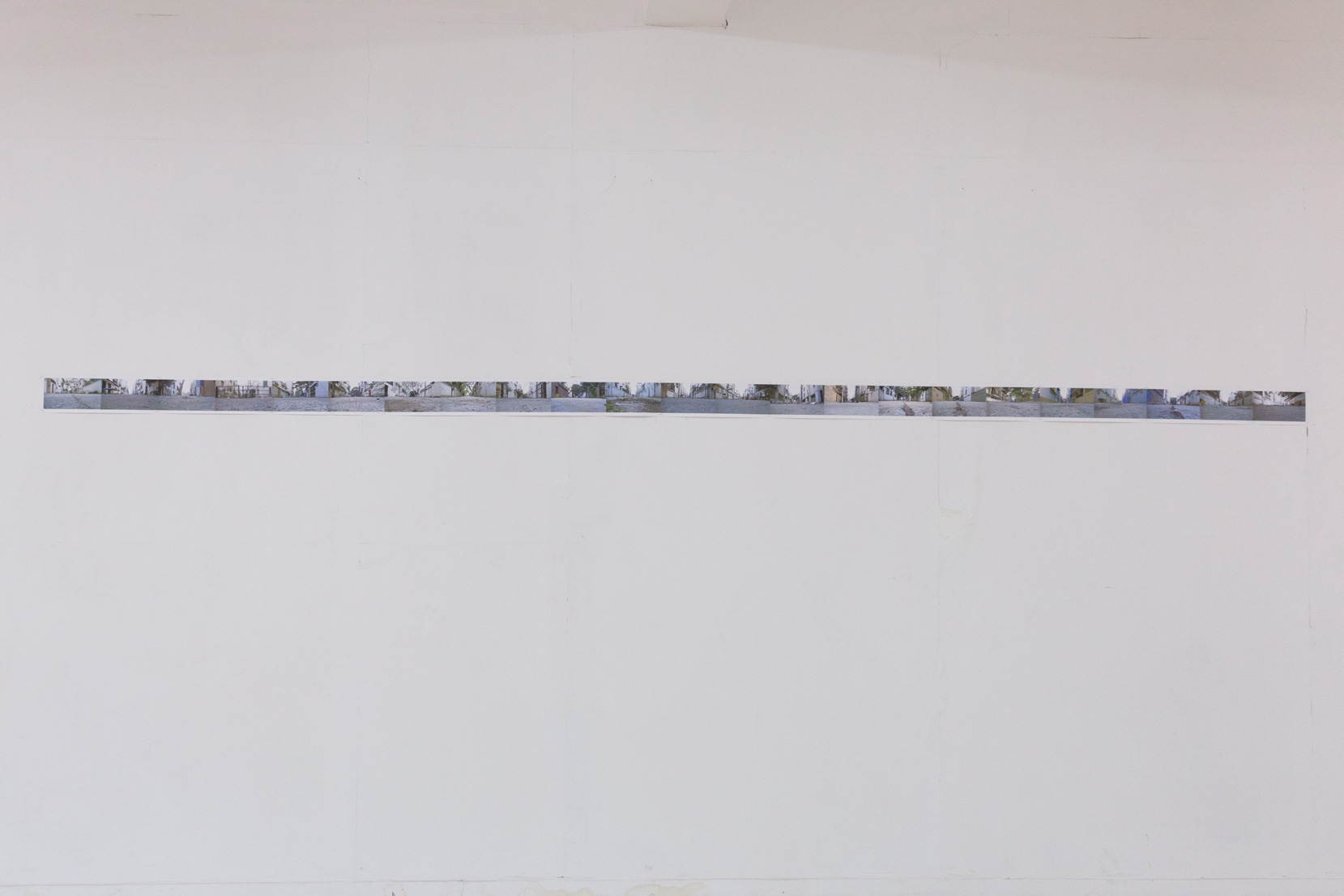 The forthcoming stages of progress will be a post-First Draft project, with the energy of such impromptu pop-ups undoubtedly pushing the young artists to challenge the conventional structures of exhibitions and displays: experimenting with equally prompt ideas itself converts these exhibition spaces into larger art projects. The show was constantly balancing between the aspects of the curated and the uncurated, allowing the artists an encounter without mediation. The arrangement of the works and the execution of the show in its rawest form found interest in the minds of the viewers, generating dialog within the transient of the happening.
The forthcoming stages of progress will be a post-First Draft project, with the energy of such impromptu pop-ups undoubtedly pushing the young artists to challenge the conventional structures of exhibitions and displays: experimenting with equally prompt ideas itself converts these exhibition spaces into larger art projects. The show was constantly balancing between the aspects of the curated and the uncurated, allowing the artists an encounter without mediation. The arrangement of the works and the execution of the show in its rawest form found interest in the minds of the viewers, generating dialog within the transient of the happening.
Shalmali Shetty
Shalmali Shetty has a BVA in Painting and Printmaking from the Faculty of Fine Arts, MSU Baroda (2015) and a MA from the School of Arts and Aesthetics, Jawaharlal Nehru University, New Delhi (2017). Concurrently working in technical art capacities and writing about art, she intends to coalesce her practice and theory in the production of the curatorial. She is a contributor for Bigart, Artdose and TAKE on Art Magazine, among others.
